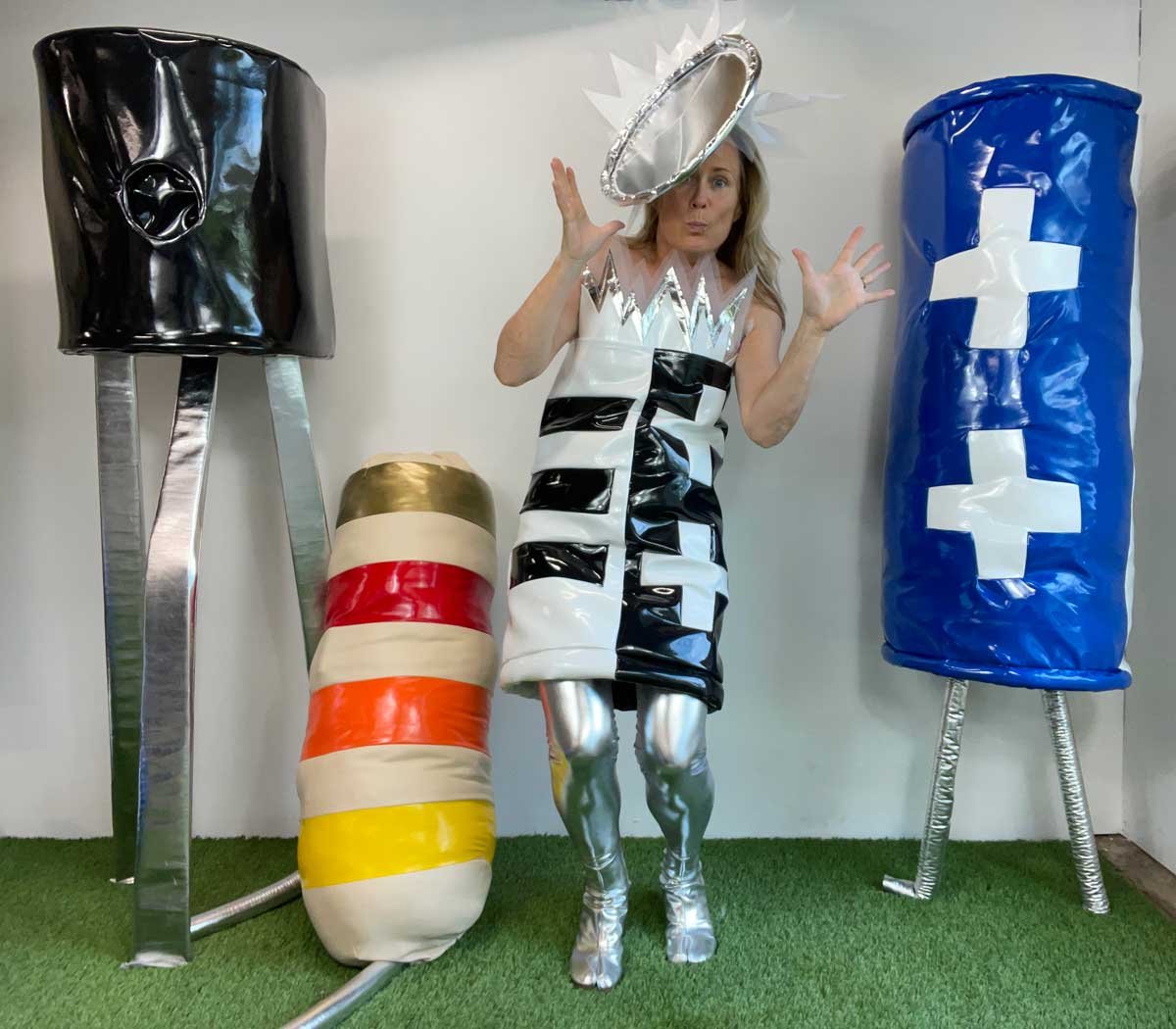For those of you who don’t recognize electronic components, this guide is for you ⚡️ My installation, “Circuit Garden,” is planted with oversized sculptures of common electronic parts used in nearly every circuit ever made. Hardware components are the media fundamentals of electrical engineering and electronic art — without which we would not have computers or software. They comprise the physical anatomy of machine intelligence. These are: capacitors (electrolytic and ceramic types), transistors, resistors, LEDs, wires, and ICs (integrated circuits, aka chips). Yes, there are other important types of hardware not included in Circuit Garden (or mentioned here), but I’ll sculpt those another time 😉
capacitor
Exploding Capacitor /
Happy Halloween! This year, I am an exploding capacitor paying homage to rapidly expanding human potential / 2021
Human Capacitance /
Human, capacitor (2021). I am sewing a series of plush electronic components to create a sculptural circuit garden in the style of Claes Oldenburg. Electronic devices make great metaphors for the human condition. It’s everywhere in our language: you have great energy // human potential // I’m on your wavelength // we are polar opposites // resistance to change vs. capacity for change // our attraction is electric // be positive, have good vibes, etc. Humans are symbiotic with electricity! The universe is a circuit! Resonance, charge, flux, capacity, resistance, frequency, vibration, flow, magnetism, current… We are the human electric.
open studio: study in progress /
Scene from my studio today. Above are my model, and a photograph and drawing of the same.
I'm working on studies for a new painting. Capacitors have so much personality! They make great models, especially for an introvert on a tight budget.
open studio: peace on earth /
Peace on Earth, goodwill to all. Digital photo. Kelly Heaton, 2015
I'll be on vacation until the first week of January, 2016. Happy holidays!
open studio: zombie formalism /
They're coming for you.
open studio: landscape electronics #portraits of #power /
Portrait of C from my Landscape Electronics series. These are studies for large-scale public art installations. I will be posting more images from this series in the coming months. Digital photograph. Kelly Heaton, 2015
A portrait of power from my Landscape Electronics series. Digital photograph. Kelly Heaton, 2015
open studio: making a person-sized capacitor /
Welding the seam of 22 gauge steel to make a shape resembling a ceramic capacitor. This will serve as an armature. Finishing work will be done with Bondo and sanding to hide imperfections, such as the dimples caused by the pining hammer.
Two circles of 22 gauge steel were shaped using techniques from old-fashioned auto body repair. Repeated tapping with a pining hammer introduces a gentle curve to the steel by stretching the metal incrementally. The same method was used to define the channel where the capacitor leg attaches. A slapper was used to counteract the effects of excessive or uneven pining (a slapper will flatten metal out). For more information on manual techniques in auto body shaping: http://www.metalshapingzone.com. Their how-to video is well-worth the money. Classic car restoration tools can be found on eBay.
The two halves of the capacitor head were welded together (and sometimes brazed with a filler rod because it is easy to blow a hole through thin steel when you are torch welding). Clamps were used to hold the seam together as close to the weld as possible, as steel wants to warp or shift when it gets hot. The legs of the capacitor are hollow steel tube filled with sand to prevent the tube from collapsing when shape was introduced with heat and hammering. Once the legs were shaped, I removed the caps (holding in the sand) and welded the legs to the head of the capacitor.
Photos: Kelly Heaton and Sarah Loy























